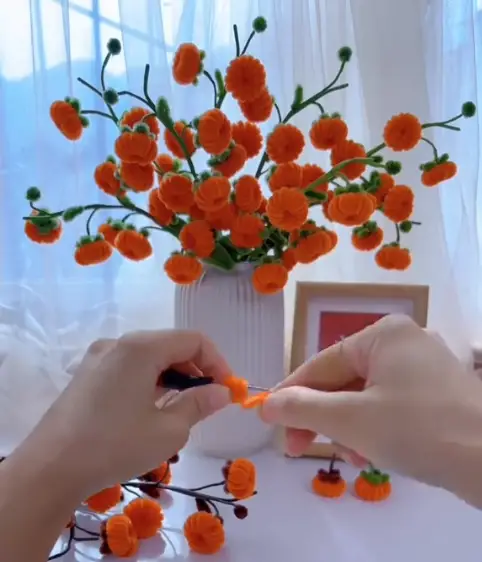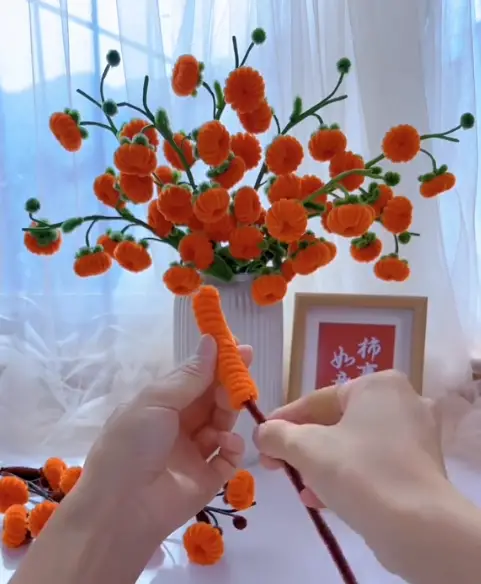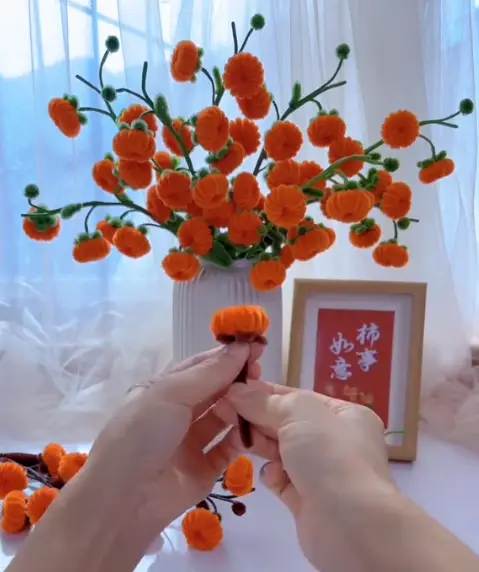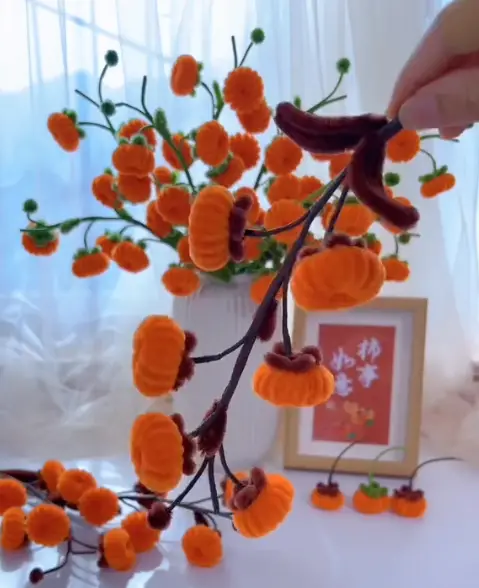🌟 Hurry – this special offer won’t last forever! Don’t miss the chance to save big and make your DIY dreams a reality. Click here to start your journey: https://temu.to/k/u7t97s4h9c3 🛍️
Crafting has long been a sanctuary for creativity, offering solace and self-expression to those who dive into its colorful and textured world. Among the myriad of craft techniques that inspire millions globally, pipe cleaner flower-making has carved a niche as both an accessible and versatile DIY project. The combination of pipe cleaners and acrylic beads is not only visually stunning but also offers endless possibilities for custom designs that suit any aesthetic or occasion.
Imagine the charm of intricate, vibrant flowers that require no soil, no watering, and no fading blooms. The simplicity of crafting these stunning flowers with pipe cleaners and beads belies the elegance of the final product. Many enthusiasts credit this craft for its therapeutic value—an ideal pastime to channel creativity while creating something meaningful.
The global rise of handmade crafts has been fueled by movements like the DIY culture, popularized in part by social media platforms such as Pinterest and Instagram. Celebrities like Reese Witherspoon and Drew Barrymore have also championed the art of crafting as a way to reconnect with mindfulness in a fast-paced digital era. These influencers remind us that even the busiest lives can carve out space for creative ventures, and projects like pipe cleaner flowers offer a perfect blend of simplicity and artistic flair.

The craft requires minimal materials, making it a low-barrier entry for anyone interested in exploring their artistic side. Pipe cleaners, available in a kaleidoscope of colors, form the structural foundation for these flowers. Their pliable nature allows for easy shaping, making them an ideal medium for both beginners and seasoned crafters. Acrylic beads, on the other hand, add a touch of sophistication, mimicking the natural dew or pollen of fresh blooms. These beads elevate the craft from simple to elegant, adding depth and dimension to the flowers.
Creating pipe cleaner flowers involves a series of steps that are both satisfying and rewarding. First, the crafters select their materials, carefully choosing color schemes and bead shapes to complement their design vision. The process of twisting and bending the pipe cleaners into petal shapes requires a gentle yet intentional touch, ensuring that the flowers take on a realistic form. Beads are strategically placed on the petals or used as centers, their glossy finish catching the light in a way that mimics nature’s subtle sparkle.
While crafting, it’s easy to draw inspiration from natural flowers like daisies, roses, or even exotic orchids. For those seeking a contemporary twist, abstract floral designs with bold, unexpected colors can make a striking statement. The versatility of pipe cleaner flowers means they can be used in a variety of ways—decorative bouquets, embellishments for gift wrapping, or even as playful accessories like hairpins and brooches. The possibilities are as boundless as one’s imagination.

This craft is not just about creating beautiful objects; it’s also about embracing sustainability. Handmade projects like these encourage the use of eco-friendly materials, and pipe cleaners and beads can often be sourced from recycled or upcycled supplies. The growing emphasis on sustainable living has heightened the appeal of DIY crafts, and pipe cleaner flowers perfectly align with this ethos. Instead of buying synthetic decor items, individuals can craft their own, reducing waste and fostering a more conscious approach to consumption.
The popularity of pipe cleaner crafts has even extended to educational spaces. Teachers and parents frequently use these crafts as a way to engage children in hands-on learning. The tactile experience of working with pipe cleaners and beads enhances fine motor skills, while the opportunity to experiment with design fosters creative thinking. Moreover, collaborative crafting sessions can be a wonderful way to bond as a family, bridging generational gaps through shared artistic endeavors.
Famous personalities have also drawn attention to the meditative benefits of crafting. Actress Sarah Jessica Parker once remarked on the importance of dedicating time to “slow hobbies” that counterbalance the hectic nature of modern life. It’s no wonder, then, that pipe cleaner flower-making has found its way into mindfulness workshops and therapeutic art programs. The repetitive motions of shaping and decorating flowers can be deeply soothing, offering a sense of accomplishment and calm.

In recent years, the craft has also gained recognition in the world of fashion and interior design. DIY pipe cleaner flowers have made appearances in unconventional wedding bouquets, avant-garde runway designs, and whimsical home decor settings. These creations serve as a testament to how a simple, accessible craft can transcend its humble origins to become a statement of innovation and artistry.
The surge in interest for handmade crafts has led to a proliferation of online tutorials and communities dedicated to sharing ideas and techniques. Platforms like YouTube and TikTok are brimming with step-by-step guides, showcasing everything from beginner-friendly designs to intricate floral masterpieces. The hashtag #DIYFlowerCraft has garnered millions of views, connecting crafters from all corners of the globe. These virtual spaces provide not only inspiration but also a sense of camaraderie, uniting people through a shared love for creativity.
Moreover, the financial accessibility of pipe cleaner flower-making makes it an attractive option for those seeking budget-friendly crafts. For under $20, anyone can gather the necessary materials and begin experimenting with designs. This affordability democratizes the craft, ensuring that creativity isn’t limited to those with significant financial means.

Beyond individual enjoyment, this craft has the potential to create a positive ripple effect in the broader community. Handmade flower arrangements can be donated to nursing homes, hospitals, or community centers, bringing joy to those who may not otherwise have access to fresh flowers. The act of gifting a handcrafted bouquet carries a personal touch that store-bought items simply can’t replicate, imbuing each piece with a story and sentiment.
Pipe cleaner flower tutorials continue to inspire people of all ages, transcending boundaries of skill level and artistic expertise. They remind us that beauty can be crafted with the simplest of tools, and creativity can flourish in the most unassuming materials. As society increasingly values the human touch in an era dominated by automation, crafts like these hold a timeless appeal, grounding us in the joy of making something with our hands.
From classrooms to Instagram feeds, pipe cleaner flowers have captured the hearts of crafters worldwide. Their enduring charm lies in their ability to transform ordinary materials into extraordinary creations, offering not just aesthetic pleasure but also a meaningful outlet for expression. The next time you pick up a handful of pipe cleaners and beads, you’re not just making flowers—you’re cultivating a moment of inspiration, one petal at a time.





